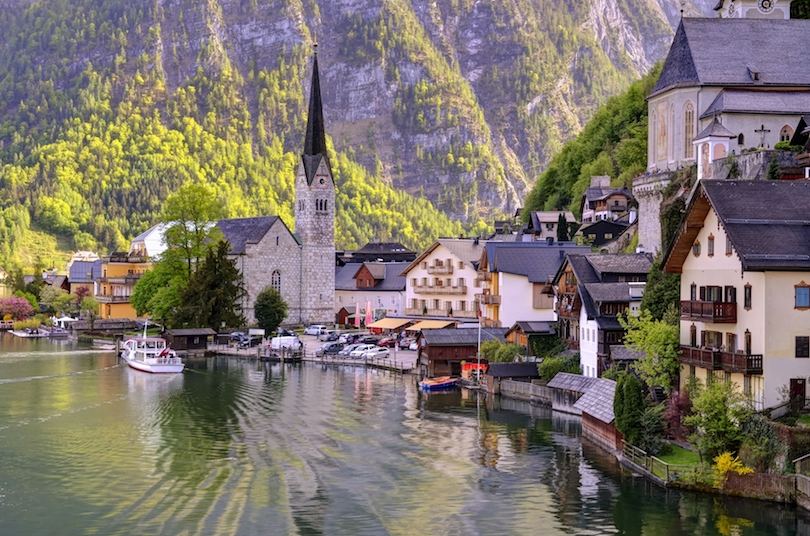People come to Argentina for romance. Nature-lovers head to Patagonia for trekking around the blue-emerald lakes, surrounded by the splendor of hanging glaciers and mountains. Others, who love the past, travel here to sit in Borges’s cafe or dance the tango at Milonga. Those who love wine come to bike around the hills of Mendoza, and hop on the vineyards, sipping on Malbec along the way. The country has a charm unlike anywhere else. While many of its residents are known for being blunt and oblivious to debate, Argentines are also more likely to share a mate (a loose leaf highly caffeinated tea) with you and invite you to their family’s Asado (barbeque).
Either way, being here will feel foreign and familiar all at once, and its intrigue will make you keep coming back again and again.
Planning Your Trip to Argentina
- Best Time To Visit: Visit in the spring season (September to November) for lots of sun and balmy temps. This season is the perfect time for hiking and whale watching, or on the other hand, exploring Argentine cities on foot without the heavy humidity.
- Language: Spanish.
- Currency: Argentine peso, although US Dollars, euros, or Brazilian reals are sometimes accepted at businesses that are frequented by tourists.
- Getting Around: In Buenos Aires, SUBE (Subway), is quick and cheap, when there are no delays. In other cities light rail or public buses would be the best option. In rural areas, self-driving or booking a remis (charter car) is ideal.
- Travel Tip: Being late is culturally acceptable. If you’re meeting Argentines for lunch or coffee, plan to show up about 10 minutes before the agreed time. If you’re going to a house party at night (not for dinner), it’s common to be at least an hour late.
Things to Do
Climb Argentina’s rugged mountains, cheer on a team at a football game, dance to its sensuous tango, and write your memoirs in its cafe. Ski or snowboard down Patagonia’s peaks, watch penguins at Tierra del Fuego or stand above the spectacular waterfalls of Iguazu. Explore its spooky jungles or traverse the jungle of Gran Chaco. If you prefer indoor activities, watch a circus show, go to a concert at the Cultural Center, or go thrift store shopping in Buenos Aires.
- Visit a national park for trekking, birding, or swimming. In addition to the soaring Perito Moreno Glacier, Los Glaciares is one of the most famous for its views of Mount Torre and Fitz Roy.
- Watch a football game. Whether you go to a match or watch a bar with a thronging crowd, you’ll have a good time, after all this is the land of Maradona.
- Watch a tango show. In Buenos Aires, you can see many for free at Plaza Dorrego in San Telmo or on Caminito in La Boca. However, if you want a show over dinner and a tango class first, try one from companies like Piazzola Tango.
What to Eat and Drink
Argentina is known for meat, wine, and mate. To get the most traditional Argentinian experience of eating meat, visit the Asado (Argentinian version of barbecue). The types of Asado vary across the country, while portenos will stick to steak and choripán, Patagonians do Asado al Palo, lamb grilled on an iron cross. Argentina has its own version of pizza and they take great pride in their ice cream, which is a product of its large Italian diaspora. There are many vegetarian and vegan options in cities, but those seeking a well-balanced diet without meat can find it difficult in the countryside.
While micro-breweries have popped up all over the country in recent years, Wine and Mate are the go-to drinks. (It’s harder to buy bad wine than good wine here.) Low-cost brands like Bravo and Alma Mora are decent and can be purchased at grocery stores for a few dollars on the equivalent of pesos. Try out the spectrum from super pricey to super cheap to find your favorite while you’re here.
Mate, a loose-leaf highly caffeinated tea, can be purchased at any grocery store. To drink this you’ll need a bombilla (filtered straw) and a mate gourd (also available to buy at grocery stores). However, check with your host or hotel to see if they provide these for free to guests. If you’re feeling friendly and walking in with a group of drinking Argentines, just ask them for a sip and they’re likely to share it with you.
Where to Stay
Argentina is the eighth-largest country in the world and the second-largest country in South America. Where you stay will depend on what you want to do and what time constraints you have. If you will be here for several months and want to see different parts of the country, fly out of Buenos Aires as you can fly anywhere domestically from here and there are many airport and bus carrier options. Those focused on hiking in Patagonia should stay in El Chalten if they want a small village vibe and serious trekking while wanting some trekking but more amenities like delicious chocolate shops, should head to Bariloche. However, if wine is your thing, immerse yourself in the hills of Mendoza.
Getting There
By far, the most popular airport in Argentina is Buenos Aires’ Ezeiza Airport. If you fly into Argentina, you’ll probably be flying into Ezeiza, however, that’s not the only way to travel if you’re already in South America. Many long-distance buses arrive from Chile, Paraguay, Brazil, and Bolivia. For those arriving from Uruguay, the ferry is the most popular way to get to Argentina via the shores of Buenos Aires.
- Ministro Pistarini International Airport (Ezeiza): Best for flying internationally in general.
- Jorge Newbery (Aeropark) Airport: The second largest airport in Buenos Aires, good for flying to and from Uruguay.
- Malvinas Argentinas Ushuaia International Airport: A very small international airport, good for flying cruises to Antarctica.
Culture and Customs
Argentines do not like to refer to themselves as American. Instead, they use the term “estadounidens”, which literally translates to “United Statesian”. If you refer to yourself as an American, you might get a short lecture in Spanish, especially if you find yourself outside the tourist circles here. To avoid this, when asked about your nationality, simply state that you are from the United States (“Soy de Los Estados Unidos”).
People here eat dinner very late, usually around 10 pm. (And consequently, many things don’t open until 10 a.m.). In Buenos Aires, a typical dinner time might be dinner at 10 p.m., a bar at 12, and a club from 3 a.m. to 6 a.m. Other Latin American countries. Argentines generally avoid spices. While restaurants with spicy food do exist, it is usually those selling exotic and non-Argentine dishes.
You don’t have to tip all the time in Argentina, but a 10 percent tip would be greatly appreciated if you do. If you go to a fancy restaurant, hire a tour guide, or participate in a primarily tourist-oriented activity, you should definitely tip 10 percent.
Money-Saving Tips
- Exchange the currency for the blue market rate (informal rate), as you will sometimes get double your money. Bring dollars or euros with you to exchange in denominations of 50 and above. You will get better rates here than in your country and currency converters give even higher rates for larger denominations.
- Wire yourself money via Western Union. You will get the same rate as the blue market rate, and it is safer than going to the blue market money exchange house.
- In Patagonia, Hitchhiker. It is very common and great to go between hill towns or rock climbing spots.
- Camp when you can. If there is no camping in an area, check with a hostel to see if they will let you pitch your tent on the property.
- Sometimes taking a budget flight will be roughly the same price or cheaper than a long-haul bus.
- Buy a SUBE card to ride the subway or take buses. These cards can be used in Buenos Aires and throughout the country.
- Visit museums on Wednesdays when they’re free.
- Check the various Centro cultural (cultural centers) websites for free concerts, art performances, and classes of all kinds.
- Tap water is fine to drink. Most restaurants will give you a glass of tap water if you ask. You don’t even have to buy a bottle of water unless you want it the Argentinian way: “con gas” (aka sparkling).
- You can make a more inexpensive meal by filling it with several empanadas or a choripan (sausage sandwich). Also check out the “Comida por peso” restaurant, where you can pay for take-out meals according to your weight.
Similar Articles









